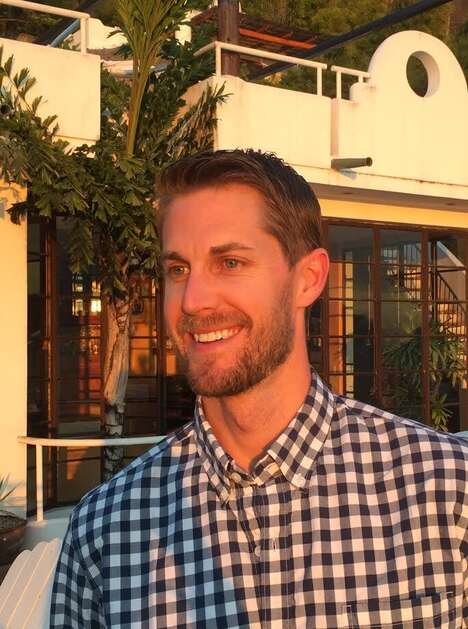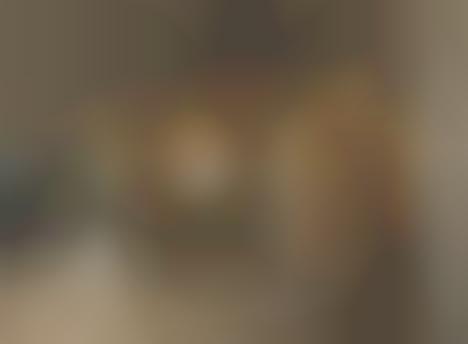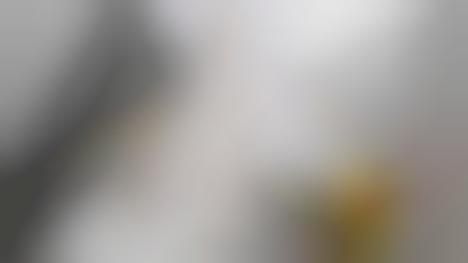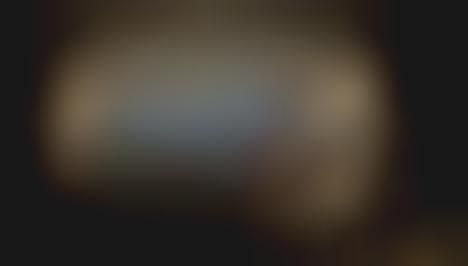Opportunities and Disconnects in Innovation
Jack Elkins, Director of Innovation at Orlando Magic
Related Trend Reports
Branding, Business, Drinking, Food, Health, Life Stages, Lifestyle, Luxury, Marketing, Travel Jack Elkins is the Director of Innovation at Orlando Magic, where he built the NBA's first innovation lab. He recently spoke with Trend Hunter about how to take obstacles and turn them into opportunities.
Jack Elkins is the Director of Innovation at Orlando Magic, where he built the NBA's first innovation lab. He recently spoke with Trend Hunter about how to take obstacles and turn them into opportunities. How does your team generate great ideas?
I think it’s arrogant to think that we create great ideas. The first thing we had to do was create the openness and the environment for lots of ideas. It started with the foresight of our leadership to create an Innovation core value and share with our organization that we have the permission to do this. We put several things in place when we started to implement our core value. We created a catalyst team internally to be advocates, meaning we launched our initiative not just from the top down but from the bottom up. It became something that people saw wasn’t going to go away. We immediately ran early projects to get some quick wins. We created the NBA’s first innovation lab and established a process so people know that if they have an idea, they can bring it forward. They also know that we can’t execute every idea, but the process shows how we move ideas forward. It’s simple – if you have an idea, you have to get it sponsored from a VP of the organization. They decide what’s worth spending time and resources on.
So we’ve got a process in place, and then when we’re in the projects, we use all the tools and trades that are out there. To go divergent in our thinking, to maximize the quantity of ideas, but we focus a lot on realizing that it’s important for us to put a culture in place where people feel like they can bring things forward, and then they also see that we ship. We actually implement these things, we’re a lab that ships, we’re not just a lab that generates ideas.
What are some barriers to innovation and how do you get around them?
There are the typical barriers everyone always discusses such as fear or change, leadership buy-in, etc. I don’t want to talk about the typical because what’s really great about my job is that it's to help people see that a barrier might be a constraint that they can use to their advantage. My job at the Magic is to remove the barriers to our staff’s creative potential – their ability to solve problems and create new innovations. More importantly to me than talking about barriers is focusing on what I believe are the two big reasons for innovation – BIG Opportunities and BIG Disconnects. The BIG Opportunities are things that we should embrace and move towards because if we don’t a competitor will and the BIG Disconnects are the things that exist that we cannot avoid. Both are disruptors.
Big opportunities can be seen as a barrier because some people see these opportunities as a threat. The opportunities are things like exponential technologies, some people see these as threats but they’re actually opportunities if you learn what they are and think divergently about how you can use them - approach it by thinking about how we might use these to solve problems, create new solutions, and keep our business moving forward.
In BIG Opportunities we also have “the rising billion;” billions of people in the world previously marginalized are now becoming connected to the Internet and all the possibilities it provides. The people that were not connected previously, now come online and unleash a creativity on the world that the world has never seen. We’re going on 8 billion people, and when we have large swaths of people that have become connected, it really fuels new things. What you see is that brands tend to have issues culturally with getting things done locally, so they go try more progressive things in those emerging markets – it’s easier to try a new concept there and then once it’s been proven just introduce it as a new project in the established market. There are really big opportunities that companies should be taking advantage of in the form of exponential technologies and the fact that we have the whole world coming online.
The BIG disconnects include things like our ecological divide, our economic divide, and our social divide. From an ecological perspective, we have a world that’s burning 50% more resources than we can actually renew. From the economic divide perspective, in 2010 there was over a quadrillion in foreign exchange transactions, 20 trillion of that was physical trade, which is only 1.4 percent. This means that only 1.4% of that entire transaction was based on physical things meant for people. The problem with that is that it is based off using resources that are being burned 50% faster than we can renew, and more importantly, the remaining 98% of the transactions were all purely financial speculation – so there's a big disconnect between the financial and the real economy.
The divide that I like to work on, that I think is a challenge, pertains to the social divide. There is a big disconnect of our lowercase “work” what we do, with our uppercase “Work,” which is our purpose. There is a disconnect from our creative selves and a gap between our work and our inventiveness. There is a disconnect in how we align around solutions. These are all going to become more exposed as automation affects the world more. Lots of people derive purpose from their work and when that work goes away it becomes an issue. The World Economic Forum says that in the next five years, one of the top 3 skillsets you need to have is creativity so that you can create solutions and new business lines and move forward. So many people have been conditioned to be disconnected from their creative selves. It doesn’t necessarily mean everyone has to become an artist, you’re creative when you’ve been inventive or created a solution to a problem. We’ve found that when you mix diversity of thought together with a formula of removing the barriers to creativity, you can get co-creation to happen.
If I were to mention some of the barriers that have puzzled me the most, I would first mention KPIs. KPIs are a really big barrier of innovation because the typical ways that people have measured businesses over the years often is not the best measure of innovation. Typical measurements can stifle a project before it is even started. You don’t know the ROI on something that’s never been done or you’ve never been able to solve, so you can’t claim what that’s going to be on the front end.
A lot of barriers can be solved by speed to concept, and prototyping to trials as quick as possible, so that you’re not burning too many resources to attempt things and you are able to get quick wins.
How do you identify trends?
The data/new learning that you’re looking to find, typically can come from your end user, it can come from data sources that you have, or it can come from trends related to that problem where you’re sort of benchmarked. The quote that I hang my hat on all the time within my lab is Einstein’s quote that says “no problem can be solved with the same level of consciousness that created it.” You don’t have to replace yourself with somebody new that can solve a problem, you just have to change yourself. That means you’re going to learn something new, or you’re going to change your perspective. What we do is we try to ask ourselves; what’s working well, what do we not yet understand?
In Stewart Brand’s concept of pace layering, he identified that in any society, there are 6 layers of change. The top layer is labeled as fashion (the things that change socially very quickly, day to day, week to week). The second layer is commerce, the types of things that most of our companies are doing. The next is infrastructure, and then you have governance/power structures, culture and then nature. Each layer changes at a different pace, things change quicker at the top and slower at the bottom. If you can affect things lower on the scale, you then can control everything above it. For example, if I were to change the power structure of my organization, then I would also be influential over the infrastructure, the commerce and the fashion. When we look at trends or trying to identify data with what we need to do, it’s not necessarily a good question to ask what the trends we’re looking for are, because those tend to be high on the structure. We’re also looking at the things that are low in the structure. The big opportunities and exponential technologies that are going to affect our business in the next 20 years. We need to be putting in structures and processes now that will allow us to be flexible and ready when that happens. That’s not necessarily a trend but that’s futurology type stuff. I’m not tasked with identifying trends as much as I’m tasked with identifying what can be done that we need to learn in order to solve problems, and trends are just one of a few layers of that.
Do you have specific rituals for resetting to be creative?
I want to be a leader that makes my highest goal happen which is to build creative leaders and foster innovation. Because I know my highest goal, I’m "geeked out" on everything that I’m doing. I don’t like when people say they’re busy, because I think that’s kind of a lazy thing to say, it’s an excuse. When I am busy as the term is meant to describe, I have chosen that and I really love that. I have some specific rituals for renewal, but for me it begins by being in a place of purpose which fuels me rather than drains me - it all flows together. I’m in the middle of doing what I’m meant to do and I love it.
In order for me to keep going at the pace that I like to go, a few things that I do is have a morning routine where I meditate, it’s very helpful for me to be able to focus. Several mornings of the week I’ll also put thoughts down, a very quick journal. I don’t participate in social media very much, I don’t use email very much. I try to pay attention, to be a first-class “noticer” and accept feedback as a gift. What I do during the day is I just try to reinforce that cycle and do the things that help me be the most authentic version of myself, for as much of the day as possible. Personally this is usually when I create something, or when I teach somebody something, that fuels me. To do those things, often I have to learn something new – when I’m leading or facilitating a project I always have to learn something new. The things that don’t fuel me, I try to minimize as much as possible. Even if they have to be there, it’s not necessarily a renewal ritual but I systematically eliminate them as much as possible. Having to manage politics, getting lost in email, etc. If you don’t have a goal or don’t know what you’re working on then it’s very easy to get distracted, lost and burnout by responding to those things.
What do you think the future of your industry will look like?
One thing I am not sure teams are prepared for is to innovate due to economic disruption. In education, the concept of Zero based curriculum is about lowering barriers for effectiveness, instead of increasing barriers for efficiency. The challenge is when you’re in an industry and you get really good at the things you can do, you build a bunch of efficiencies and you lock in on how you do things and it makes it harder to change things. So when disruptions come, ill-prepared companies tend to be able to change too little until it’s too late. I think that there are some big disruptions coming to sports because of what’s going to happen to everyone else. Automation that’s going to affect several jobs, like 47% of US jobs are going away within the next 20 years, that effects half a population’s ability to use disposable income to go to an entertainment event. Now those jobs are going to be replaced with something else – we don’t know what they are yet, but you have to expect that some of the fanbase is going to be disrupted. Sports teams are in control of a portion of their revenue, but a big portion of the revenue is driven by league revenues and big third party contracts. If any of the portions of your revenue which you are not directly in control of are disrupted, it can change your entire business model. TV as I mentioned is one of the revenue streams changing, automation that will change and challenge jobs of our fan base is another.
People choose the path of least resistance to solve matters of tension. So when that revenue issue happens, teams and leagues are going to turn to the easiest source to protect their revenue streams and the first thing they’re going to add is gambling. You’ve already seen it with soccer teams in the EU and you’ve seen it with leagues already assuming that it won’t be a big deal, it won’t be taboo in the future. Like the fact that the NHL went ahead and moved into Vegas. Teams have shied away from Vegas, it’s a great market, but gambling has been an issue. Although I’m not a big fan of it I think you’re going to see more of that in the future.
I think you’re also going to see much smarter use of scientific approaches to performance. I don’t think we’re talking about wearables, we’re talking about synthetic biologies, biotech that allows you to maximize the potential of a human athlete.
References: nba
Featured Articles

Embracing the Future While Honoring the Past
Lisa Ingram, President and CEO at White Castle

Recycled Wooden Offices
Fiverr Office Was Inspired by the Artistic Nature of Its Business

Tech Brand Vodka Gifts
The Google Campus Warsaw Offers Complimentary Vodka for Visitors

On-the-Go Granola Bowls
Rush Bowls Assembles Nutritious Fruit Bowls for Any Time of the Day

Panoramic Airplane Windows
Boeing's SkyView Panoramic Window Offers Picturesque Aerial Views

Creating Connected Experiences
Nancy Hutson, Corporate VP of Events & Entertainment at SeaWorld

Specialized Office Yoga Programs
Yoga Promotes Health and Wellness in Corporate Environments

Analytical Infographic Platforms
'Muralio' Turns Google Analytics Data into Infographics

Marine Life-Protecting Burials
Eternal Reefs Provide Eco-Friendly Underwater Burials